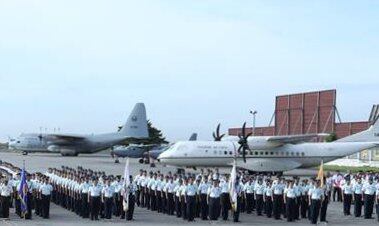MELBOURNE, Australia — Two Cessna 208B Caravan aircraft purchased by the U.S. Department of Defense and modified to perform airborne intelligence, surveillance and reconnaissance tasks will be handed over to the Philippine military on July 27.
In making the announcement, Philippine Defense Secretary Delfin Lorenzana also said the aircraft will be used to conduct patrols off the waters surrounding the country.
[Is ISIS looking to expand its toehold in Southeast Asia?]
The aircraft have already arrived in the Philippines, with a photo released by the Philippine Air Force of a Tuesday awards ceremony held at Villamor Air Base in Manila showing two gray Cessna 208B turboprops on the tarmac among an assortment of other Philippine Air Force aircraft.
The two aircraft were procured in early May 2016 under separate DoD contracts funded under section 2282 of the fiscal 2016 National Defense Authorization Act and the Counterterrorism Partnerships Fund for the capacity-building of foreign military, maritime or border security forces to conduct counterterrorism or other operations that benefit the national security interests of the United States.

Other photos seen by Defense News of the Cessna 208Bs at the base showed that one of them is carrying the U.S. civil registration N320ZZ, which U.S. Federal Aviation Administration records indicate is one of six similar aircraft registered by the U.S. Air Force’s Life Cycle Management Center at Wright-Patterson Air Force Base, Ohio, who is the contracting authority for the program.
The FAA records for this aircraft, along with another bearing the registration N322ZZ, have been amended in late June stating that they have been installed with an FAA-approved temporary extended-range fuel system designed by Weaver Aero International, which perhaps indicates that they were being prepared for delivery at the time.
The six aircraft are fitted with the L3 WESCAM MX-15 high-definition imagining and electro-optical/infrared sensor for airborne full-motion video surveillance in a central housing. The sensor is integrated with an on-board airborne operator sensor console and will also have Harris ultrahigh/very-high frequency and high frequency radios for air-to ground and air-to air communications.
Under one of the contracts, North American Surveillance Systems of Titusville, Florida, was awarded a $39.98 million contract for modification and integration of ISR capabilities into six Cessna 208B aircraft and for training and field-service representative support.
Other than the Philippines, the other aircraft were earmarked for Cameroon and Chad, while Niger was to receive continued field-service representative support, spares and crew training for existing aircraft.
North American Surveillance Systems specializes in the installation of electronic communications as well as navigation and surveillance systems, and it has an FAA supplemental type certificate to modify the Cessna 208B and install the MX-15 and associated systems.
A separate $14.19 million contract for L3 was awarded on the same date for the production of ISR capabilities and spares for the aircraft.
As Defense News has reported previously, the Philippine military is embroiled in a battle since late May against militants linked to the Islamic State group holed up in the center of the city of Marawi, in the southern Philippine island of Mindanao.
The Armed Forces of the Philippines has been actively involved in airstrikes against the militants. However, its lack of ISR capability has meant that Lockheed Martin P-3 Orion aircraft from the U.S. Navy and from Australia, along with U.S. unmanned aircraft, have been providing persistent overland ISR support to the Philippine military in the city.
Mike Yeo is the Asia correspondent for Defense News.








